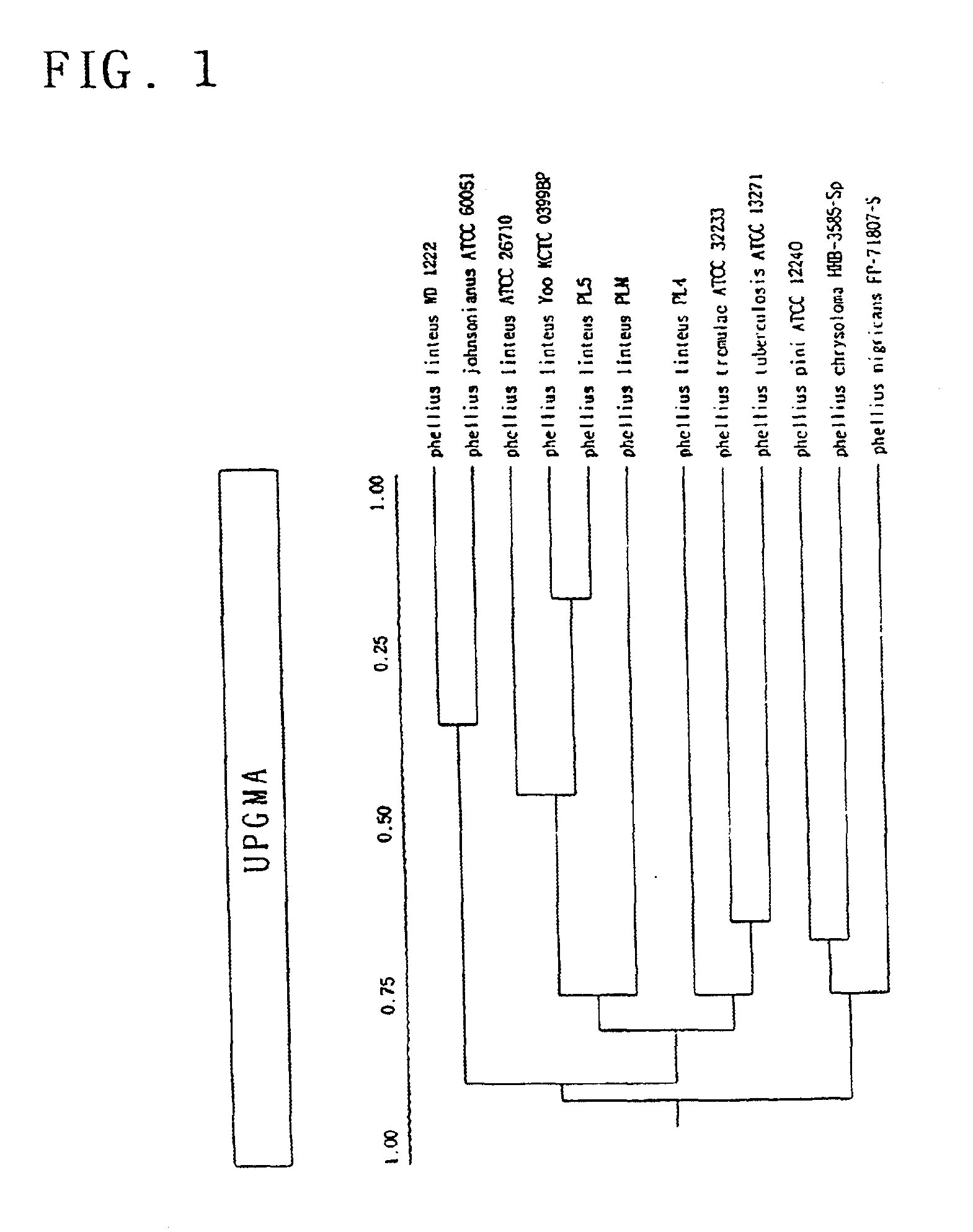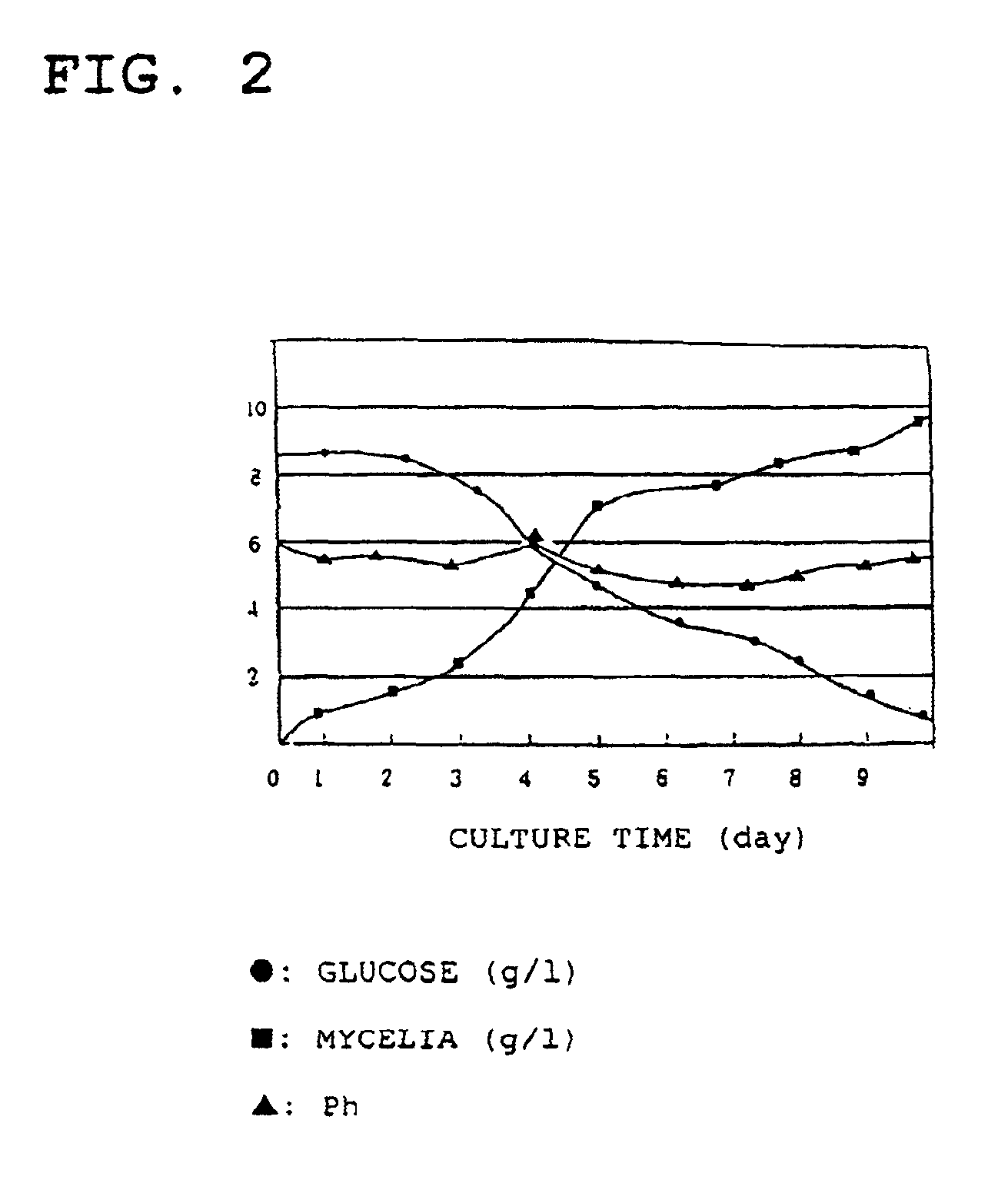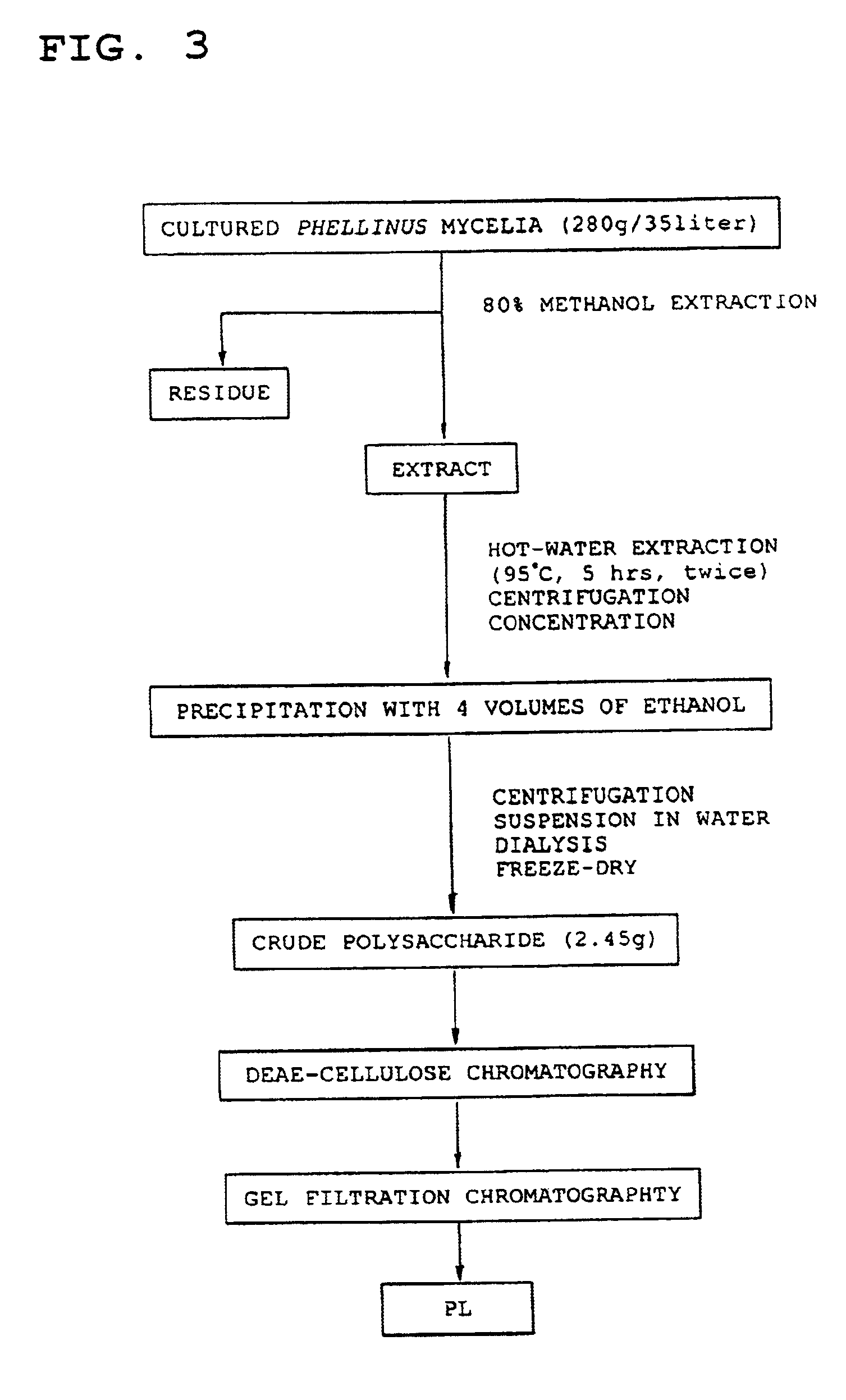Immuno-stimulating polysaccharide substance from Phellinus spp. strain and use thereof
a technology of phellinus spp. and immunostimulating polysaccharide, which is applied in the field of immunostimulating polysaccharide substance from phellinus spp. strain, can solve the problems of difficult to obtain the fruiting body of the plant, unable to help metastatic tumors, and difficult to isolate and artificially culture the mycelium of phellinus linteus
- Summary
- Abstract
- Description
- Claims
- Application Information
AI Technical Summary
Benefits of technology
Problems solved by technology
Method used
Image
Examples
example i
Culture of Phellinus Strain
[0039]The Phellinus spp. strains as given in Table 1, below, were each cultured on a potato dextrose agar (PDA) at a constant temperature of 28° C. for 5-12 days. Following inoculation in 450 mL of a PD broth, each of the strains was grown at 28° C. for 12 days with agitation at 120 rpm.
[0040]
TABLE 1Phellinus spp. used and OriginsStrainsOriginsP. linteus WD1222JapanP. linteus ATCC 26710U.S.AP. linteus KCTC 0399BPKoreaP. linteus PL5KoreaP. linteus PL4KoreaP. linteus PLMKoreaP. tremulae ATCC 32233U.S.AP. johnsonianus ATCC 60051U.S.AP. pini ATCC 12240U.S.AP. tuberculosis ATCC 13271U.S.AP. nigricans FP-71807-SU.S.AP. chrysoloma HHB-3585-SpU.S.A
example ii
Total DNA Isolation
[0041]An SDS-phenol method was utilized for the Isolation of total DNA from mycelia. Each of the mycelia cultured in Example I was washed with 20 mM EDTA, harvested by vacuum filtration using a filter paper (Whatman No. 1), stored in a deep-freezer maintained at −70° C., and subjected to freeze-drying. The freeze-dried mycelia were finely ground and 2 g of each of these powders were added with 20 mL of an extraction buffer (0.2M Tris.HCl, pH 8.5; 0.25M NaCl; 25 mM EDTA; 0.5%(w / v) SDS) and then, with 14 mL of phenol and 6 mL of chloroform. After being mixed by slow agitation, the solution was centrifuged. The resulting supernatant was treated with 15 μl of RANase A (10 mg / mL) at 37° C. for 30 min. and then, further with 15 μl of proteinase K (10 mg / mL) at 60° C. for 15 min. Thereafter, the enzyme-treated supernatant was well mixed with an equal volume of a mixture of phenol, chloroform and isoamyl alcohol (25:24:1), followed by centrifugation at 12,000× g for 30 mi...
example iii
Mitochondrial DNA Isolation
[0042]An ultracentrifugation was carried out to isolate mitochondrial DNA from the total DNA obtained from each of the strains in Example II. After being mixed with 8.8 g of cesium chloride, commercially available from Sigma, U.S.A., and 6 μl of a bisbenzimide solution (10 mg / mL), the total DNA solution (8 mL) was ultracentrifuged at 40,000× g for 40 hours at 20° C.
[0043]Following confirmation of two DNA bands under a uv light, only the upper band, that is, a mitochondrial DNA fraction, was recovered with the aid of a 21 gauge syringe needle. The mitochondrial DNA fraction thus obtained was added with an equal volume of CsCl-saturated isopropanol, mixed by weakly voltexing and centrifuged at 1,200× g at 4° C. This washing step was repeated 6-7 times so as to completely remove the bisbenzimide from the mitochondrial DNA fraction. Removal of the cesium chloride was accomplished by adding 70% ethanol three times in volume than that of the mitochondrial DNA fr...
PUM
| Property | Measurement | Unit |
|---|---|---|
| Temperature | aaaaa | aaaaa |
| Time | aaaaa | aaaaa |
| Mass | aaaaa | aaaaa |
Abstract
Description
Claims
Application Information
 Login to View More
Login to View More - R&D
- Intellectual Property
- Life Sciences
- Materials
- Tech Scout
- Unparalleled Data Quality
- Higher Quality Content
- 60% Fewer Hallucinations
Browse by: Latest US Patents, China's latest patents, Technical Efficacy Thesaurus, Application Domain, Technology Topic, Popular Technical Reports.
© 2025 PatSnap. All rights reserved.Legal|Privacy policy|Modern Slavery Act Transparency Statement|Sitemap|About US| Contact US: help@patsnap.com



